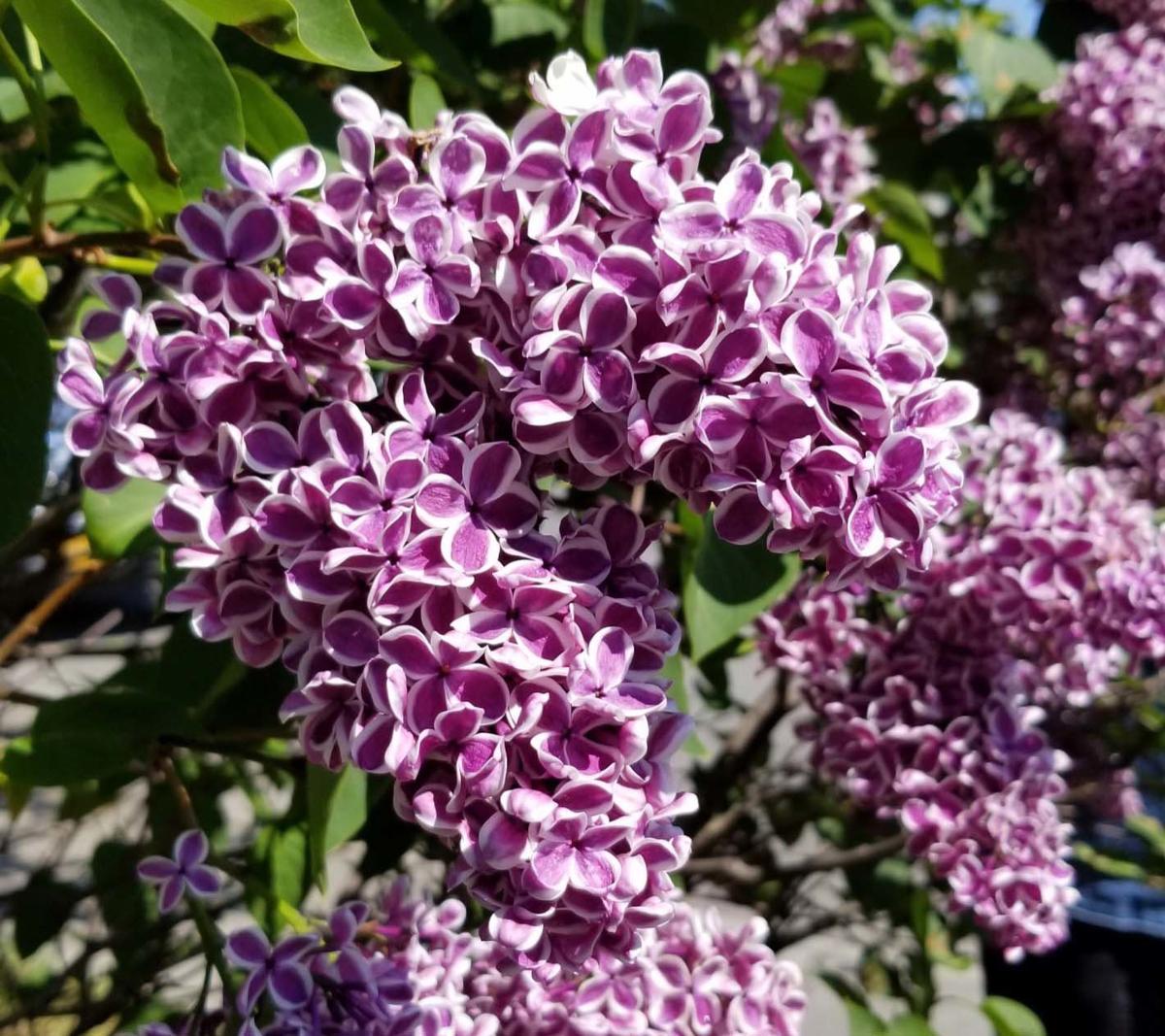
By Julie Riley
Lilacs are beginning their frenzied period of bloom. It happens quickly. Before you know it, the flowers will be gone. This is true of most perennials. They only bloom for a few weeks each year. But there are many kinds of lilacs. Select from early, midseason and late-blooming varieties and you can have lilacs blooming for an entire month or longer.
It was May 30 when I saw my first lilac blooming last spring. As I drove down Airport Way in Fairbanks, a small shrub with lilac-colored flowers caught my eye. It was blooming its heart out at less than 4 feet tall. There are 78 lilacs planted in the median strip but this little lilac was different. It matched none of my descriptions for early-blooming lilacs. It wasn’t the Early flowering lilac, Syringa X hyacinthflora or the Early lilac, also known as Broadleaf lilac, Syringa oblata subsp. dilatata. And herein lies a problem. If you see a lilac and would like to plant one just like it, it’s practically impossible to figure out what it is without a nursery tag.
How hard could it be to develop a chart to help gardeners identify lilacs? I thought I could do it using columns for bloom period, height, leaf shape, suckering habit and fall color. But with age does not always come wisdom. Lilacs are highly hybridized and sometimes even the hybrids are hybridized.
The common lilac, Syringa vulgaris, is the lilac of my youth. The heart-shaped leaves and fragrance of the purple flowers are forever etched into my mind, along with the sound of my mother pounding their stem ends with a hammer. She heard this might help prolong vase life.
One doesn’t see too many common lilacs in Fairbanks although the Georgeson Botanical Garden has a nice collection of cultivars. The most commonly planted lilac in Fairbanks is the late lilac, Syringa villosa. It is extremely hardy and is the one lilac recommended in the Georgeson Botanical Garden’s list of “Landscape Plants for the Tanana Valley.”
The late lilac’s nondescript pink flowers are packed tightly along its stems. The medium to tall shrub has elliptical leaves, a nonsuckering habit and is without fall color. There is nothing extraordinary about this lilac other than its winter hardiness and late period of bloom, which is usually the second or third week in June. It’s considered a late bloomer because it flowers after the common lilac.
When the flowers of common lilac are in full glory, the flowers of the dwarf Korean lilac, Syringa meyeri, are still tiny buds. Syringa patula Miss Kim has a bloom time similar to dwarf Korean lilac. Although Miss Kim grows to 8 or 9 feet tall, it is usually grouped with the dwarf lilacs because it is slow growing. Miss Kim is not supposed to be as winter hardy as dwarf Korean lilac but there are many locations in Fairbanks where it is growing well. Miss Kim can be found in the recent median plantings along northern University Avenue.
Miss Canada, James Macfarlane, Donald Wyman and Royalty usually bloom the second or third week in June. They belong to the very hardy Canadian or Preston lilacs, Syringa X prestoniae. Miss Canada’s pink flowers are more vibrant than those of James Macfarlane. Both Donald Wyman and Royalty have dark purple flower buds opening to lighter purple. The new foliage of Royalty shows a purplish tinge.
The late lilac is not the latest lilac to bloom. This distinction goes to the Japanese tree lilac, Syringa reticulata. The one plant I know of in Fairbanks was just finishing up flowering at Holm Town Nursery on July 20 in 2018. I was able to see the last vestiges of its creamy white flowers. Last summer I stopped by 10 days earlier and the flowers were already gone. This particular specimen has not yet reached its small tree stature.
Most of the lilacs I’ve mentioned can be purchased at local greenhouses and nurseries. If you’re undecided about which lilacs you like, another good place to view lilacs is the Fairbanks Garden Club’s Blue Start Marker at the Noel Wien Public Library. The lilacs planted in its crescent-shaped beds each have a memorial plaque that includes the name of the lilac.
Julie Riley is a horticulture agent for the University of Alaska Fairbanks Cooperative Extension Service’s Tanana District office. She will be teaching a class on lilacs online Tuesday, June 9, from 6 to 7:30 p.m. as part of Extension’s Statewide Extension Week. Watch for details at www.uaf.ces.